The Remittance Industry & Reconciliation – the ReconArt Perspective
Industry Overview
Payment services and their evolving online and mobile cash transfer channels have emerged as a flourishing industry. People across borders connect and engage in trade exchange with increased convenience. The payment platforms facilitate B2B, C2B and increasingly so P2P transfers, both domestic and international. The latter represent a significant portion of the world capital transfer volumes. Foreign remittances stand out as a particularly important part of the national current account of labor exporting destinations. In some developing countries, remittances even outpace foreign direct investment (FDI) inflows. Global remittance flows in 2014 amounted to $583 billion. In 2017, they reached $613 billion and are expected to inch up to $642 billion in 2018, the World Bank reckons.
The role of each of the payment industry players requires overcoming infrastructure obstacles, penetrating diverse environments and tackling challenges concerning service speed and security. On top of technological problems to be solved, there are F&A as well as legal & compliance aspects of this high-friction business. All-time present risk can manifest itself in plenty of circumstances such as short transaction lifecycle, high volumes, cross-border jurisdictions & regulations, currency risks, pressure to slash service fees, a long chain of collaborating stakeholders and the accompanying mutual dependence.
A BI Intelligence report shows that 94% of the remittance transfers are cash-based. However, a distinct tendency towards money wire service diversification and expansion is observed – both in terms of volumes and digital adoption. In the domestic US market alone, mobile P2P payments started off modestly with $5.6 billion compared to the general P2P segment worth $540 billion in 2014. However, it is forecasted to reach the $174 billion mark in 2019 and to contribute a third to the US P2P turnover. Online and mobile P2P transactions are driven by social commerce at national level, but will increasingly witness adoption in cross-border money wires.
In the past several years, a transition to digitalization of the remittance sub-sector is observed. While the legacy platforms involve physical presence of the remitter in front of a kiosk and deposit in cash to be wired, technology now opens payment services to security, mobile and e-commerce innovations. Start-ups are springing to address this rising demand. The majority of them report intensive growth, which subsequently puts control over operational adequacy higher on the agenda. As a result, reconciliation in this industry is a major aspect of sustained accountability and regulatory consistency.
With some modifications, the general mechanism of remitting abroad involves four parties:
- The payment operator interfaces with the remitter via an online application – desktop and/or mobile. The client (remitter) can choose from pay out options with a bank card, bank account, his account with a third party online payment platform, digital wallets (aka mobile money), etc.
- The payment operator then takes the transaction to the local correspondent – a resident bank within the location of origin.
- The local correspondent liaise with a money transfer operator, which has the responsibility to procure cash in the destination location.
- The local distributor is the point of contact for the beneficent, and here the latter can opt for bank account deposit, mobile money or airtime top-up, etc., in addition to the conventional cash pick up.
Obviously, a cross border money wire, big or small, calls for the collective effort of a multi-party cohort and generates a series of transactions in the backend. The remittance platform handles data from numerous data sources and is liable to growing in number and complexity reconciliation tasks. As the global network coverage of payment operators expands and their foreign partnership interactions intensify, bank statements reflecting these partnerships multiply in the queue. The settlement is performed in batches. Apart from the net sum wired, several service fees and commissions are deducted by the intermediaries down the line. Also, currency differences are incurred. All these items need to be reconciled in a swift and accurate manner, in order to avoid month-end close bottlenecks.
ReconArt’s Experience
ReconArt has the opportunity to work with clients well established in the remittance space and has gained valuable expertise in the field. WorldRemit has coverage in 145 countries worldwide with 0.5 million cash transfers handled monthly. InstaReM operates in 55 countries in the burgeoning Asia-Pacific market with a special focus on India. The company also manages bulk payments to multiple beneficiaries in multiple currencies and its network encompasses 8000 banks. TransferGo has footprint in 47 countries serving both consumers and business reaching 1 million transfers per year worth about half a billion GBP. The company is bracing for expansion in China.
The different players have specifics in their reconciliation processes. In the traditional mechanism, service fees are generally higher and the whole process – more sluggish. Online payments mean lower fees and faster delivery but also implies a more complex reconciliation process. Formats inevitably vary and the file import itself requires a lot of manual work in the absence of an automated method. Further, files enrichment and transformation prior to the matching itself is laborious and error prone, compromising the integrity of the input data. Cash in transit needs to be accurately reflected in the accounting systems and consequently verified against the bank statements. In addition, reconciliation requirements in the remittance industry may also pertain to non-financial data such as personal identification data.
Our clients are among the top 10 global providers in the online remittance ecosystem and demanded technological solution that would address the challenges of a fast paced, highly competitive environment, and skyrocketing transaction volumes. The spreadsheet framework used as a legacy method of reconciliation was not nearly sufficient for their needs. They were scouting for an agile, scalable, ERP agnostic tool that would seamlessly and painlessly integrate with their current systems.
Scalability and room to grow are cited among the primary drivers to leverage the ReconArt solution. The matching engine and its critical mission to bolster internal control of incoming and outgoing transactions was the second major requirement.
User friendly interface and rule based end-to-end reconciliation are among the immediate benefits observed by the clients. Automated journal entries following the matching stage provided an agile interlock with the incumbent accounting system.
Another high priority product capability is period-end balance sheet reconciliation and certification. We pride ourselves at listening closely to our clients’ needs and embarked on ReconArt™ product augmentation – the bridge between the matching engine and the certification panel saw dramatic improvements as a result of client recommendations.
Another desired client benefits that ReconArt™ successfully implemented was analytics dashboards visualizations with cross sections of outstanding items, planned versus actual balances, and historic data at the users’ fingertips.
Our clients welcomed the cloud deployment of the ReconArt product because it enabled them to integrate the reconciliation process at company level with multiple user locations at hand – a feature with direct contribution to consolidated reporting, compliance and enhanced visibility appreciated by the management team.
The implementation time frame varied depending on the complexity of the reconciliation process each company had embraced. Together, we successfully tackled challenges such as calibration of ReconArt™ for huge inventory of data formats. User training was carried out with no disruption of the day-to day business. Just the opposite – clients reported substantial time savings.
Clients moved up the learning curve pretty quickly, with implementation of new processes and the incorporation of new matching rules in the existing framework. In cooperation with the implementation team, clients managed to clear the backlog of outstanding reconciliation tasks from previous years, and upgrade import templates, thus utilizing the full potential of the system with increased confidence and independence.
Flexibility, striving to perfection and adaptability to evolving client business requirements are our primary objectives. Our ethos is solving problems with mutual understanding and ambition to perform with zero compromise.

 follow our blog
follow our blog

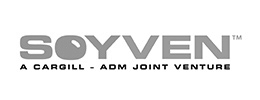

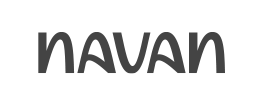
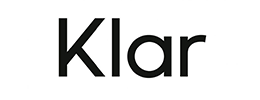


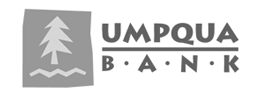
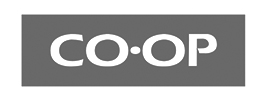

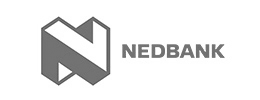


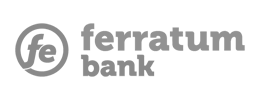
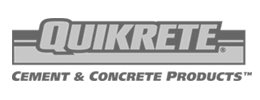

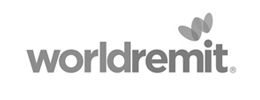






 Quick response
Quick response

